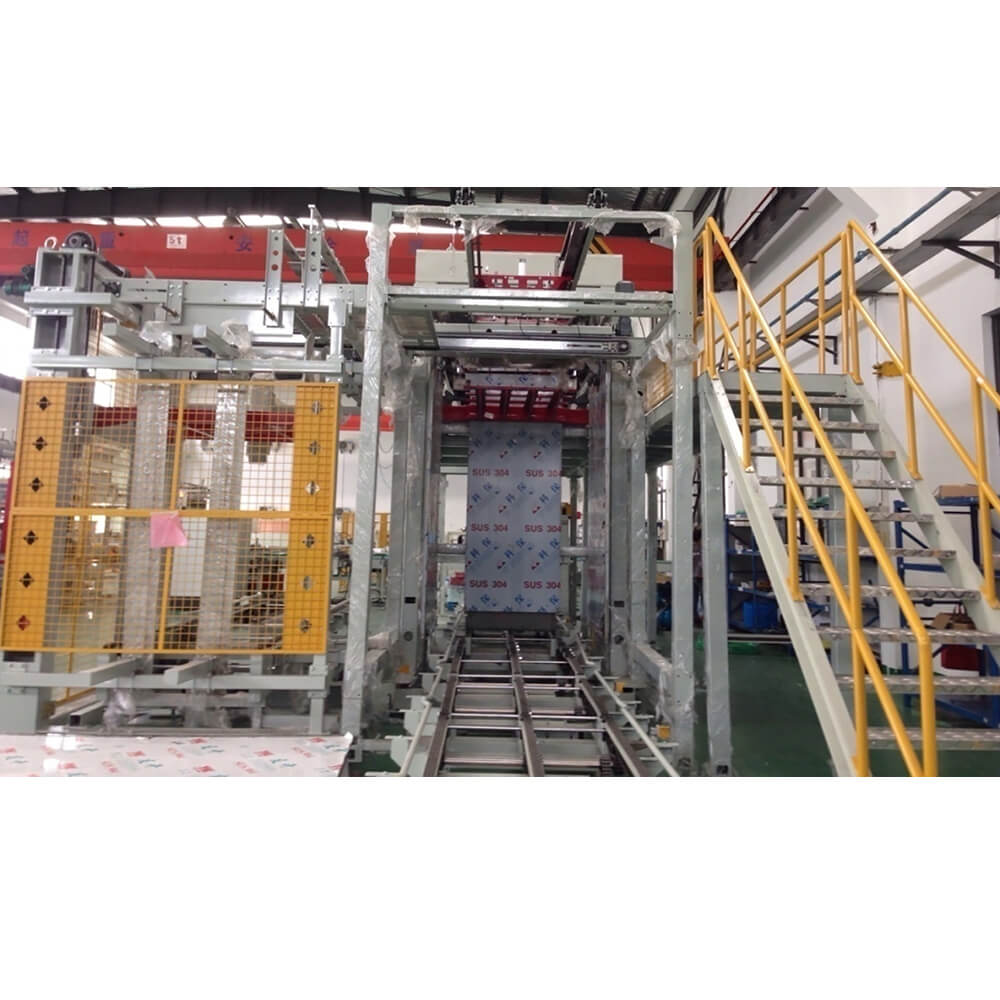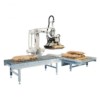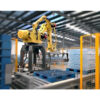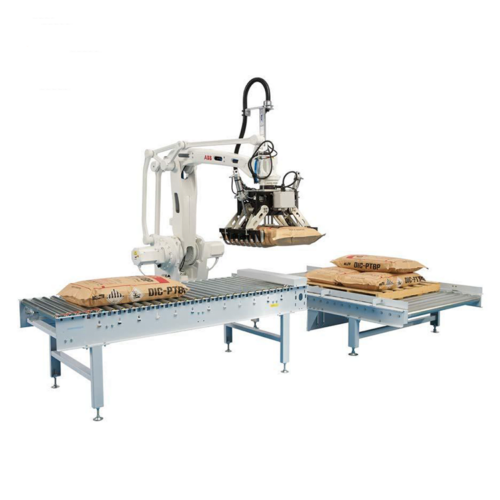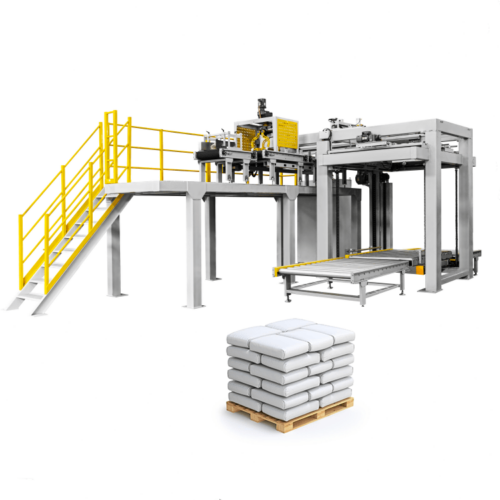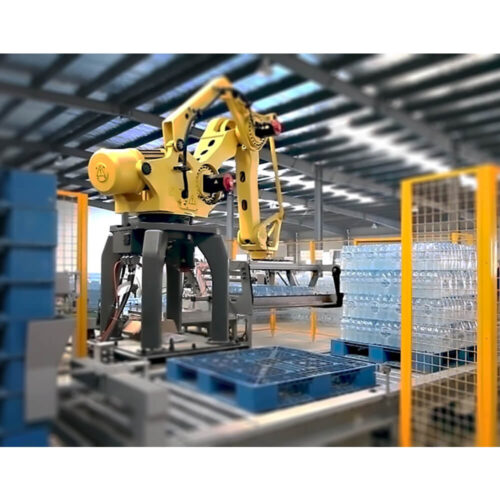What is a Depalletizer?
A depalletizer is a machine designed to unload products from a pallet. In industries where bulk quantities of goods are transported, products are often stacked on pallets for ease of movement and storage. While palletizing refers to the process of loading goods onto a pallet, depalletizing is the reverse – it involves taking products off the pallet.
Depalletizers can be manual, semi-automatic, or fully automatic. Manual depalletizers require human intervention to unload products, while semi-automatic ones assist workers in the process. Fully automatic depalletizers, on the other hand, can perform the entire unloading process without human intervention, making them ideal for industries with high production rates.
The primary advantage of using depalletizers is the significant reduction in manual labor and the associated risks. Manually unloading products from a pallet can be time-consuming and poses risks of injuries. Depalletizers, especially robotic ones, are designed to handle products with precision, ensuring that goods are not damaged during the unloading process.
The Rise of Depalletizing Robots
In recent years, the advent of robotics has significantly transformed the depalletizing landscape. Depalletizing robots, equipped with advanced sensors and gripping mechanisms, have brought about a paradigm shift in how industries handle bulk products.
- Precision and Speed: Robotic depalletizers can handle products with utmost precision, ensuring minimal damage. Their speed is unparalleled, making them ideal for industries with high throughput requirements.
- Flexibility: One of the standout features of depalletizing robots is their adaptability. They can be easily reprogrammed to handle different products, making them suitable for industries with diverse product lines.
- Safety: Manual depalletizing can pose risks of injuries, especially when dealing with heavy products. Robots, with their consistent operations and safety features, significantly reduce workplace accidents.
Key Features of the HTK-XDJ-01 Depalletizer
Shanghai Hightek (HTK) Machinery Co., Ltd, a renowned name in the machinery sector, offers the HTK-XDJ-01 model, which stands out in the depalletizer market. Here's a closer look:
- Customizable Working Speed: With a range of 500-1200CPM, businesses can customize the speed based on their requirements, ensuring optimal performance.
- High Production Capacity: With a capacity of 50 units per month, HTK ensures that even bulk orders are catered to without delays.
- Quality and Efficiency: The HTK-XDJ-01 model is a testament to HTK's commitment to quality. Designed for efficiency and built with precision, it promises a seamless depalletizing experience.
Applications and Industries Benefiting from Depalletizers
Depalletizers are not limited to a single industry. Their versatility ensures they find a place in multiple sectors:
- Beverage Industry: From sodas to juices, depalletizers handle bottled products with care, ensuring they're ready for the next phase, be it labeling or direct distribution.
- Food Industry: Packaged foods, canned goods, and other edibles are efficiently managed by depalletizers, streamlining the production process.
- Pharmaceuticals: Precision is paramount in the pharmaceutical sector. Depalletizers ensure medicines and other products are handled without contamination.
Choosing the Right Depalletizer Supplier in China
China, with its technological advancements and manufacturing prowess, is home to several depalletizer suppliers. However, choosing the right one is crucial:
- Experience: Suppliers like PkgMach.com, with years of industry experience, ensure quality products and impeccable after-sales service.
- Custom Solutions: Every business is unique, and so are its requirements. Suppliers offering custom solutions, tailored to specific needs, stand out in the competitive market.
- Transparent Pricing: Hidden costs can be a deterrent. Suppliers who offer transparent pricing, ensuring clients understand every cost component, are preferred.
The Manufacturing Process Behind Depalletizers
The creation of a depalletizer is a blend of engineering brilliance and meticulous craftsmanship. Here's a glimpse into the journey:
- Design and Blueprinting: Every depalletizer starts with a concept. Engineers and designers collaborate, using advanced software, to draft the initial designs, ensuring both functionality and efficiency.
- Material Selection: The choice of materials is pivotal. High-quality metals and components are chosen to ensure the machine's longevity and robustness.
- Assembly and Calibration: Once the components are ready, they are assembled. The machine is then calibrated to ensure it operates at peak efficiency.
- Quality Assurance: No machine leaves the factory without undergoing rigorous testing. This phase ensures that the depalletizer meets industry standards and operates flawlessly.
How to Use a Depalletizer: A Step-by-Step Guide
While depalletizers are advanced machines, their operation can be mastered with the right guidance:
- Setup: Begin by positioning the machine in the designated area. Ensure it's on a level surface and that there's ample space for movement.
- Powering Up: Connect the machine to the power source and switch it on. Modern depalletizers often come with user-friendly interfaces, making the startup process straightforward.
- Loading: Place the pallet in the designated area. Ensure it's correctly aligned with the machine's sensors and grippers.
- Operation: Initiate the depalletizing process using the control panel. The machine will then automatically start unloading the products.
- Maintenance: Regular checks and maintenance ensure the machine's longevity. Clean it periodically and check for any wear and tear.
Questions International Buyers Should Ask Chinese Suppliers
Engaging with suppliers, especially internationally, requires due diligence. Here are some pivotal questions:
- What's the lead time for delivery once an order is placed?
- Do you offer training sessions for operating the depalletizer?
- What's the warranty period, and what does it cover?
- Can the depalletizer be integrated with other machines in our production line?
- How do you handle after-sales support and maintenance?
FAQ Tips
To assist potential buyers further, here are some frequently asked questions:
- How energy-efficient are depalletizers? Modern depalletizers are designed with energy conservation in mind, ensuring optimal performance with minimal energy consumption.
- Can depalletizers handle different product sizes? Yes, most depalletizers can be adjusted or programmed to handle a range of product sizes.
- What safety features are integrated? Features like emergency stop buttons, alarms, and safety barriers are standard in most models.
- How long does it take to set up a depalletizer? Setup times vary, but with the right team and guidance, it can be done within a few hours.
- Are there any industry certifications for depalletizers? Certifications vary by region, but most reputable manufacturers ensure their machines meet international standards.
Depalletizers, with their efficiency and precision, have become indispensable in various industries. As the global market continues to evolve, choosing the right machine and supplier becomes paramount. With suppliers like PkgMach.com and manufacturers like Shanghai Hightek, businesses can be assured of quality, reliability, and value for money.

